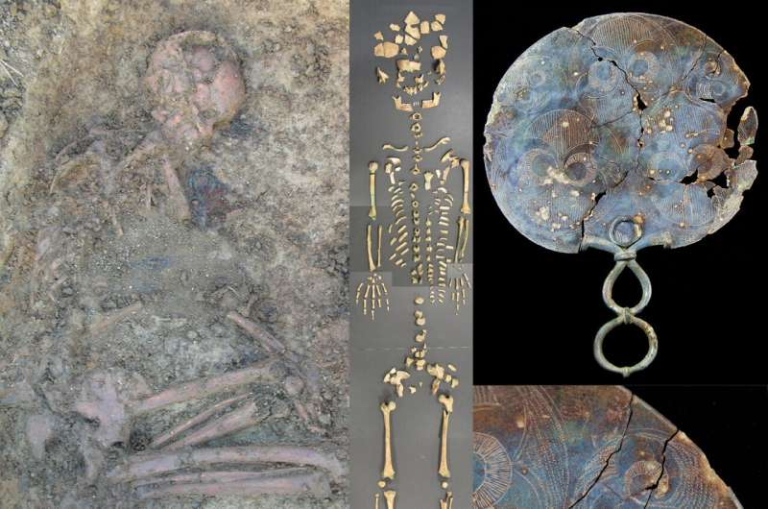East Asia Meets Europe in Lower Austria: Genetic Analysis of Early Middle Age Individuals Reveals Surprising Ancestry
Researchers from the Max Planck Institute for Evolutionary Anthropology, in collaboration with an international team, conducted an archaeogenetic study on over 700 human remains from the Early Middle Ages. Two significant burial sites, Mödling and Leobersdorf, were comprehensively genetically analyzed. The unexpected finding was that the individuals from Leobersdorf were predominantly of East Asian descent, while those interred in Mödling were largely of European lineage. These two communities coexisted side by side for at least six generations.
The interdisciplinary research indicated that genetic heritage and cultural identity do not necessarily align. The latest insights from the European Research Council project HistoGenes emerged from a genetic examination of burial grounds dating back to the 8th-century Avar period. The Avars, who arrived from the East Asian Steppes in the 6th century, settled in East Central Europe amidst a diverse population.

Despite their rich archaeological legacy, many questions remained unanswered. Were the individuals buried in these sites descendants of the Avar conquerors or of the pre-existing population integrated into Avar society? Or had these groups intermingled over time, as widely anticipated? The analysis of two large sites south of Vienna, with 500 graves in Mödling and nearly 150 in Leobersdorf, yielded unforeseen results. The study is published in the journal Nature.
When the researchers examined the ancient DNA extracted from the human remains of these neighboring sites, they were astonished. While the population of Leobersdorf was mostly of East Asian origin, those buried in Mödling had ancestry associated with European populations.
“The genetic distinction between these groups was very pronounced and consistent for the majority of individuals at the sites,” stated Ke Wang, a geneticist and one of the lead authors of the study.
Prior to genetic analysis, no significant differences between the sites had been noted. The archaeological remnants of the two communities and their lifestyles were strikingly similar. “Cultural integration apparently occurred despite substantial genetic differences, and these people were clearly identified as Avars,” remarked Walter Pohl from the Austrian Academy of Sciences, a historian and one of the senior authors of the study.

Historical records corroborate the evidence from anthropology and archaeology that this was one of the most peaceful periods in the history of the Vienna Basin, contrary to the Avars’ reputation as warriors. “We find no signs of battle injuries on the skeletons and hardly any indications of deficiencies,” explained Doris Pany-Kucera, an anthropologist at the Natural History Museum Vienna and one of the lead authors of the study. Weapons were also rarely placed in the graves.
Thanks to the sampling strategy and highly sensitive genetic analysis, a significant number of familial relationships among the deceased were identified. “The extensive genetic connections between individuals allowed us to reconstruct six-generation-long family trees at each site,” said Zuzana Hofmanová from the Max Planck Institute for Evolutionary Anthropology in Leipzig, Germany, and Masaryk University in Brno, Czechia, a geneticist and one of the senior lead authors of the study.
Exceptions were rare, with individuals having no biological ties to others at their burial ground. However, no consanguineous relationships were found even among distant relatives. Interestingly, it was determined that almost none of the mothers had local ancestors; they must have originated from other regions and communities. Yet, there were virtually no genetic links between Mödling and Leobersdorf.
Both communities adhered to similar social practices in selecting partners from specific other communities, thereby preserving their distinct ancestries: the women who became mothers in Leobersdorf apparently hailed from communities also descended from East Asia (possibly from the heart of the Avar realm), while in Mödling, they were of European descent. However, they did not differ in status or wealth.
“Status symbols such as belt fittings depicting griffins, and their culture and customs were identical. Most likely, both considered themselves Avars,” said Bendeguz Tobias, an archaeologist and one of the lead authors of the study.
Such large-scale studies systematically investigating burial grounds are still infrequent in the field. “The Mödling burial ground is one of the largest ever genetically analyzed, and such results hold immense potential for future interdisciplinary research,” noted Johannes Krause, director at the Max Planck Institute for Evolutionary Anthropology and one of the senior authors of the study.

